Houston Naturama Challenge Week 2
In case you found your way here without knowing the rules, here’s a link to the Houston Naturama intro page.
Find each of these plants
Snap a photo
Upload it to iNaturalist
The easiest way is to take the photo from within the app itself. If you’re not sure if the plant you are looking at is one of the challenge plants, snap it anyway and let iNaturalist tell you what you’ve got. There are no wrong answers in this challenge.
For each plant, I linked to a page that did a good job of describing and showing photos. If you want to see more, Google is your friend!
Week Two challenge:
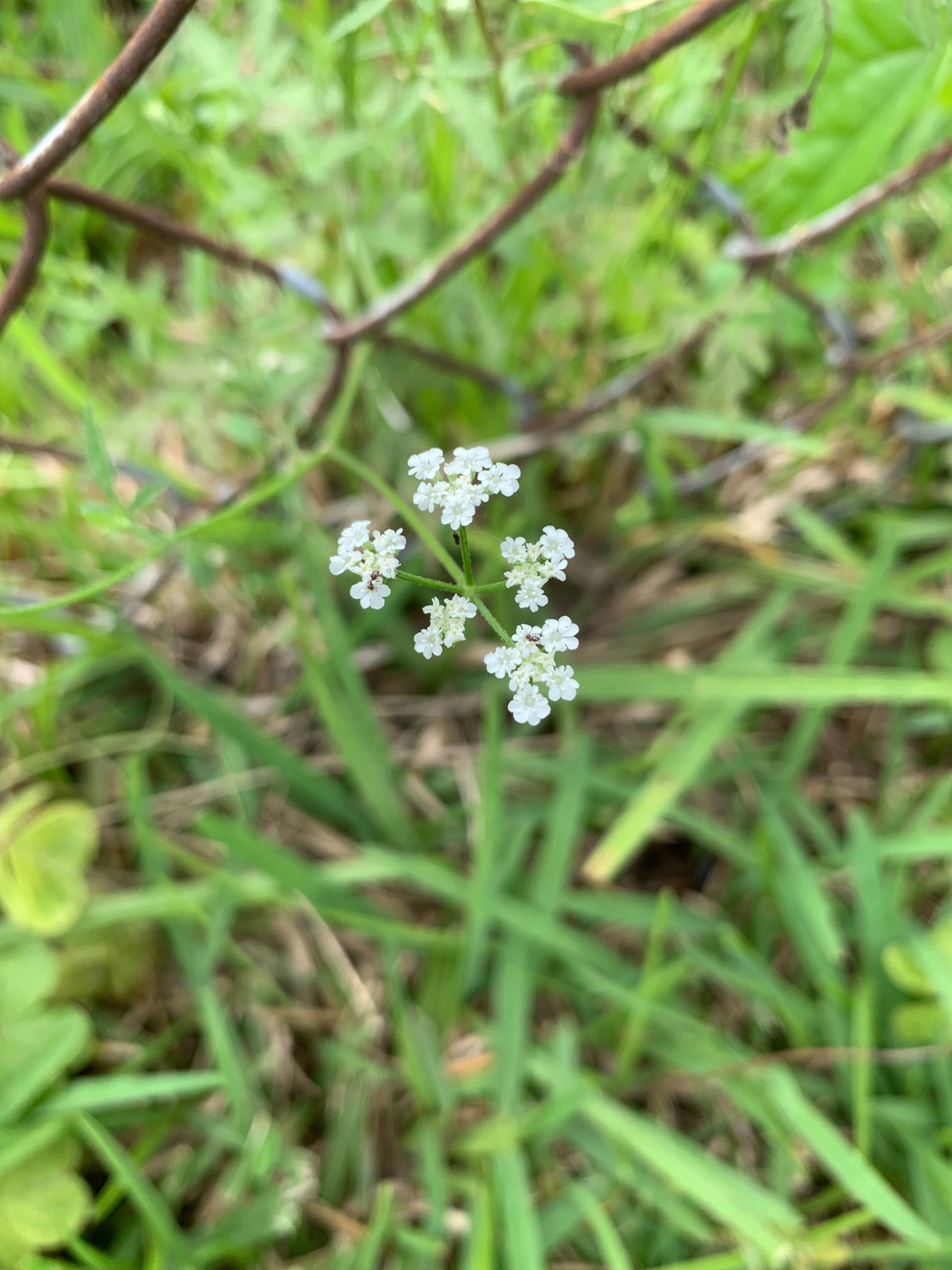 These flowers are too tiny to exist. At least that’s what catches my eye. This lacy delicate plant is cuddling up to fences right now. This is not a native, but it isn’t very invasive; pollinators enjoy it and black swallowtail butterflies use it as food for caterpillars. So while it isn’t native, it plays very nicely with the locals!
These flowers are too tiny to exist. At least that’s what catches my eye. This lacy delicate plant is cuddling up to fences right now. This is not a native, but it isn’t very invasive; pollinators enjoy it and black swallowtail butterflies use it as food for caterpillars. So while it isn’t native, it plays very nicely with the locals!
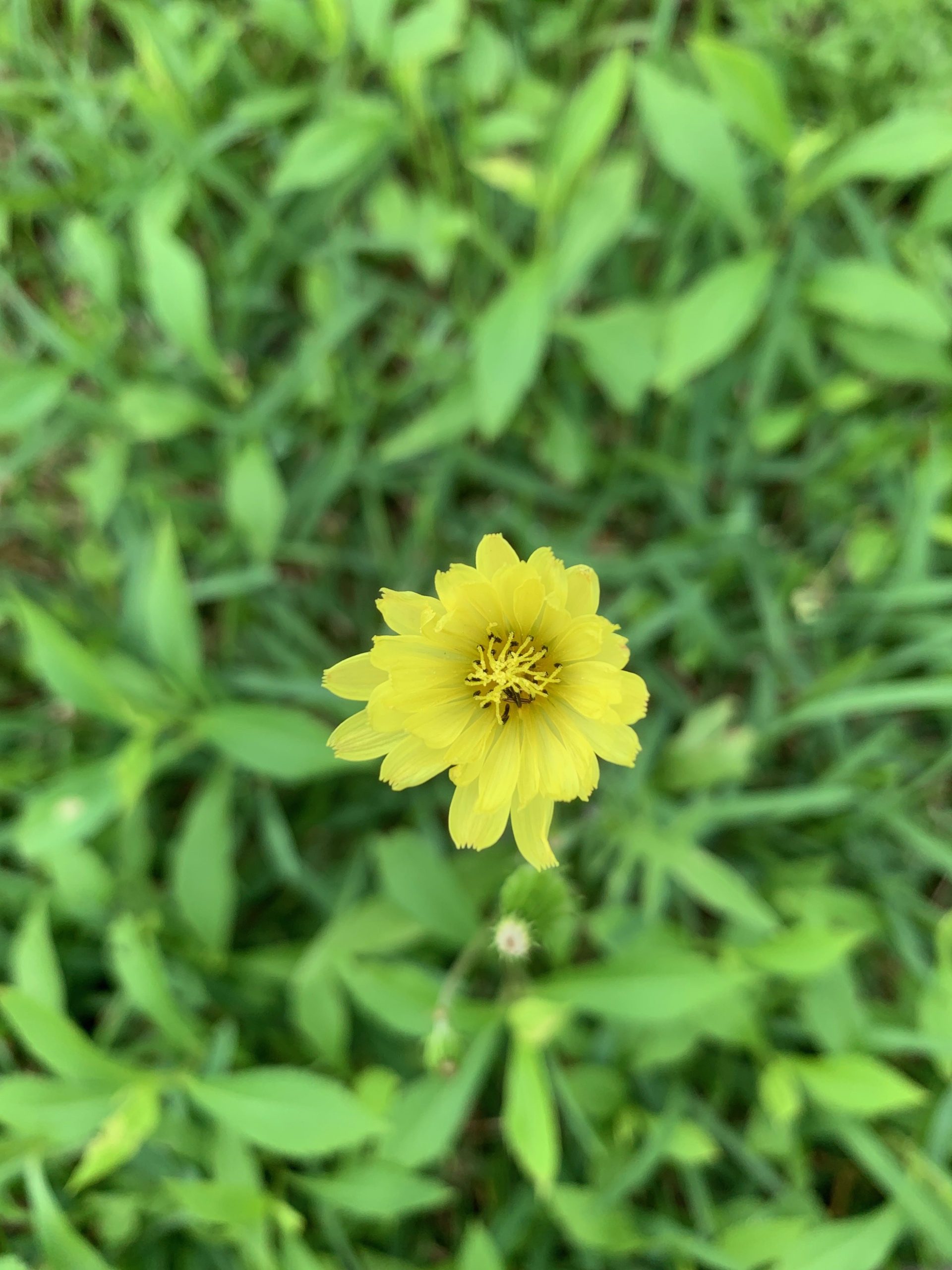 You really can’t miss this one. It’s bright yellow and it sticks out wherever it is. It is not actually a dandelion, but it sure looks and acts like one. And you will notice that the link I provide is to forage Texas. You can eat them. So there’s a side benefit to learning how to identify them. In these strange days, knowing which weeds to eat might become useful!
You really can’t miss this one. It’s bright yellow and it sticks out wherever it is. It is not actually a dandelion, but it sure looks and acts like one. And you will notice that the link I provide is to forage Texas. You can eat them. So there’s a side benefit to learning how to identify them. In these strange days, knowing which weeds to eat might become useful!
And listen carefully here. Do not eat any plant you aren’t 100% sure you know. There are lookalikes that can kill you.
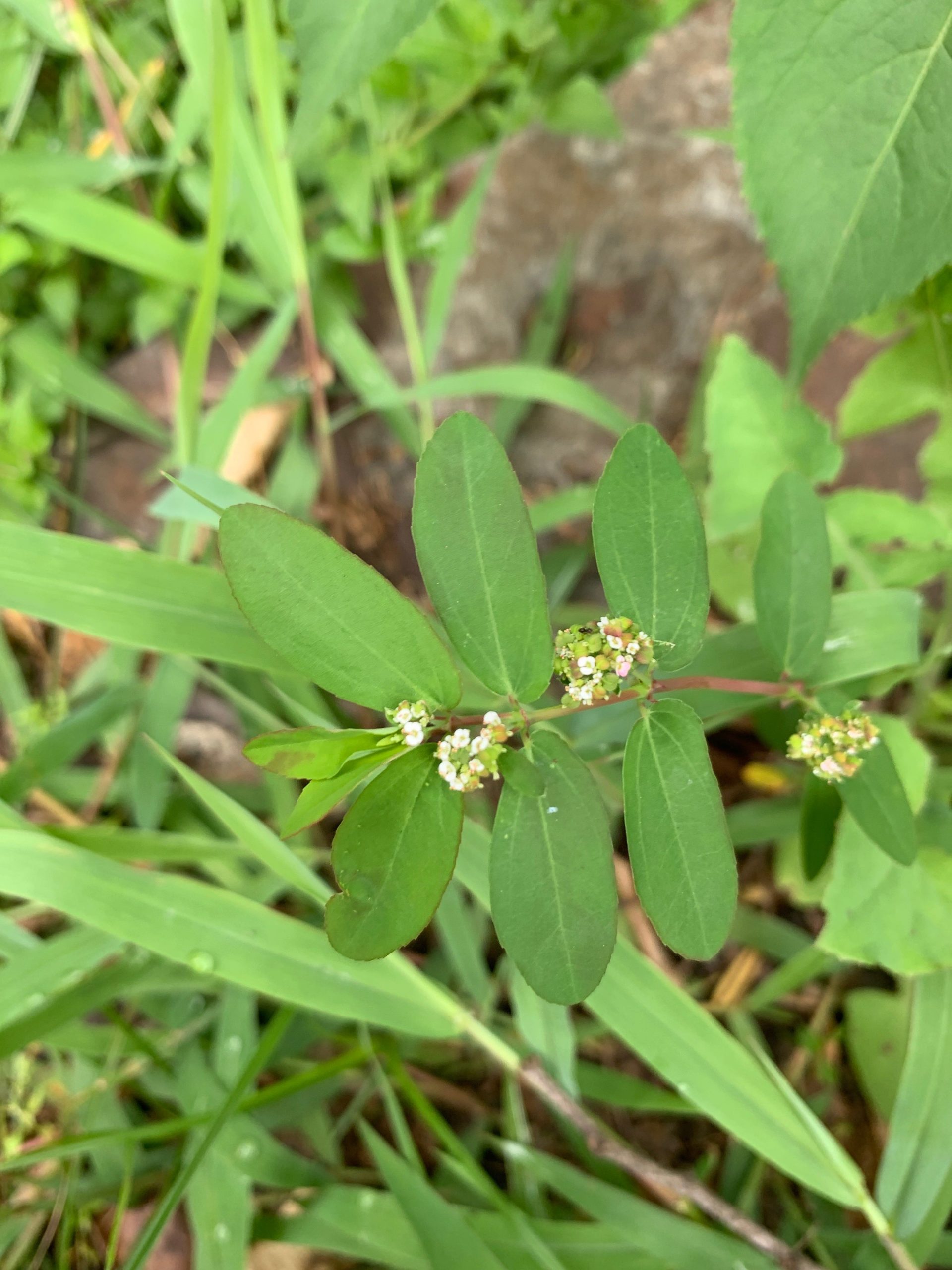 I’ve always liked this little native. There is something lovely about it despite lacking flashy flowers or fruits. Go figure. I’ve sent you to find a plant with no distinguishing characteristics. Except nothing else looks quite like it and it’s everywhere. If you break the stem, the sap that runs out is milky. Pro tip, milky sap usually equals bad things. Like all euphorbias, this one is poisonous and the sap can be a skin irritant. Not to worry, people pull this weed all the time in their gardens and never even notice. But take a moment to admire it before making it go away.
I’ve always liked this little native. There is something lovely about it despite lacking flashy flowers or fruits. Go figure. I’ve sent you to find a plant with no distinguishing characteristics. Except nothing else looks quite like it and it’s everywhere. If you break the stem, the sap that runs out is milky. Pro tip, milky sap usually equals bad things. Like all euphorbias, this one is poisonous and the sap can be a skin irritant. Not to worry, people pull this weed all the time in their gardens and never even notice. But take a moment to admire it before making it go away.
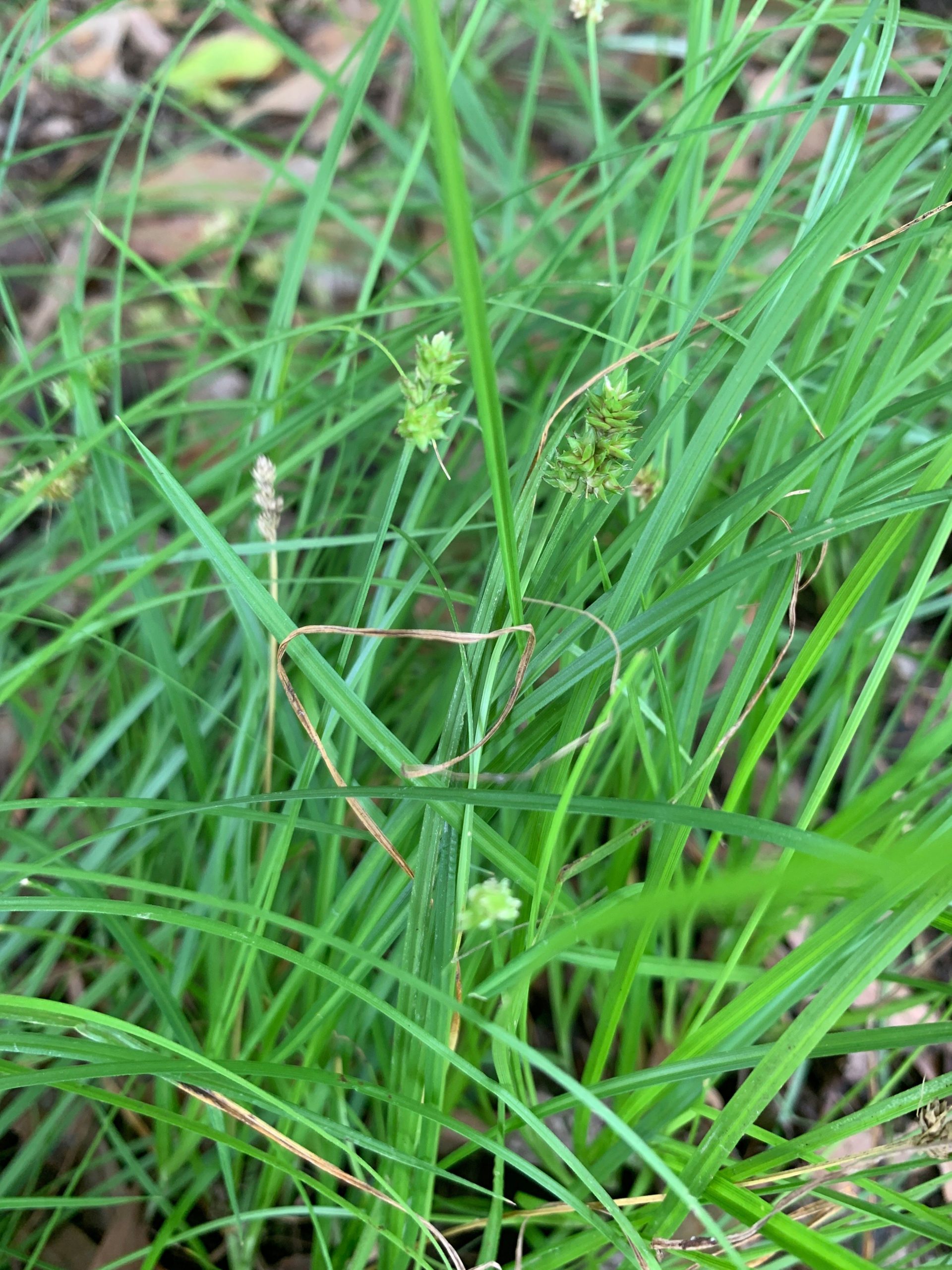 This one might prove a challenge. But once you start to recognize Eleocharis (ell-eee-ock-aris) you will start seeing it everywhere.
This one might prove a challenge. But once you start to recognize Eleocharis (ell-eee-ock-aris) you will start seeing it everywhere.
The common name for this native is hair grass because the leaves are very skinny. In fact, this isn’t a grass at all, it’s a sedge.
We have a bunch of different eleocharis species here, some native some not. They all look like clumps of very skinny grass, but what is not at all like a grass is that they will get tiny flowers at the tips of each stem.
Look for them in damp, shady places. Once you know what they are, you will find them everywhere and be happier for it.
Any bee that isn’t a european honey bee
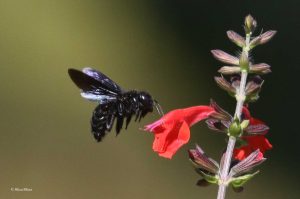 This one should be easy. Step one, go here to see what a honey bee looks like. You already know what a honey bee looks like. They look like every bee you have ever recognized. But if you look more closely, you will notice that there are bees that are different. Right now, we have bunches of carpenter bees around. They are big and fat.
This one should be easy. Step one, go here to see what a honey bee looks like. You already know what a honey bee looks like. They look like every bee you have ever recognized. But if you look more closely, you will notice that there are bees that are different. Right now, we have bunches of carpenter bees around. They are big and fat.
One bonus of native bees (which is what all those not honey bees are) is that they usually don’t sting. They have the ability, but they have no hive to defend. They are solitary, each female making her own nest. There is no benefit to stinging so they almost never do.
Bonus double points
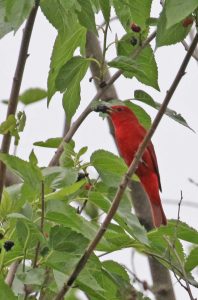 Right now, our mulberry trees are in full fruit and they are all over the place. Usually these shrubby trees are background or scrub, but right now, they are naturalist gold. They provide abundant fruit at the exact time the songbird migrants from Central and South America are passing through on their way north. Mulberries are the food of choice for these hungry fliers, so every now and again, mulberries will be full of orioles, tanagers, and grosbeaks. Even when the migrants aren’t putting on a show, the seasonal cedar waxwings will mob the tree every day it is in fruit.
Right now, our mulberry trees are in full fruit and they are all over the place. Usually these shrubby trees are background or scrub, but right now, they are naturalist gold. They provide abundant fruit at the exact time the songbird migrants from Central and South America are passing through on their way north. Mulberries are the food of choice for these hungry fliers, so every now and again, mulberries will be full of orioles, tanagers, and grosbeaks. Even when the migrants aren’t putting on a show, the seasonal cedar waxwings will mob the tree every day it is in fruit.
On my neighborhood walk to find challenge plants, I noticed three mulberry trees within a few blocks of my house. I realized that Houston is probably full of them and each one is a bird beacon. I thought it might be interesting to begin to map where they are. Since there is no guarantee that there is a mulberry within a few blocks of anywhere, I won’t make this one of the five, but since I have an interest in motivating the cataloging of mulberries, I offer two points if you report one!
If you need help or have something to say, please email me at blog@alisakline.com.

